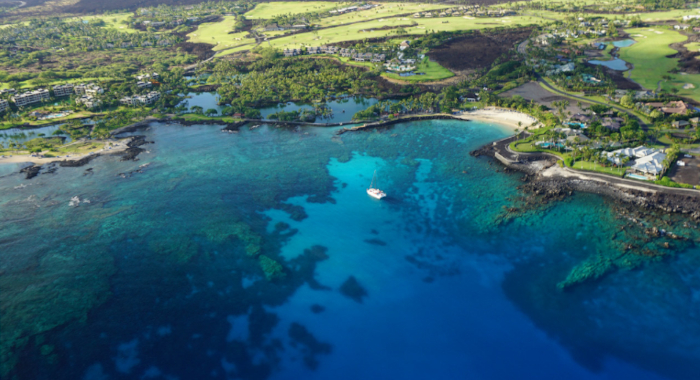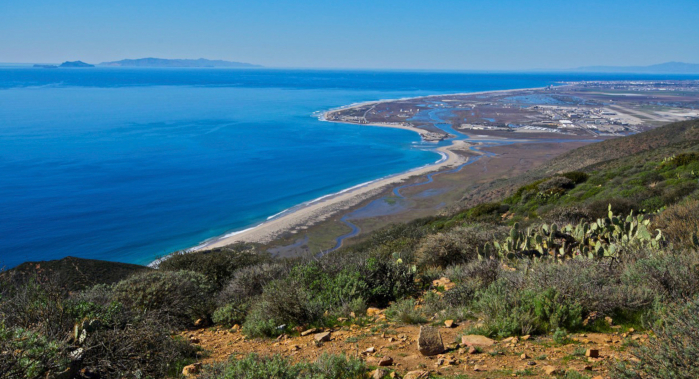Almost half of the world’s human population lives in coastal areas, and associated coastal development has significantly degraded or destroyed many coastal ecosystems. Burgeoning human populations and rising sea levels only further constrain the availability of habitat that coastal species depend on.
California’s 1,100 mile coast has more than 200 threatened, endangered or rare species living in coastal habitats. There are hundreds of coastal estuaries that provide critical rearing habitat for marine species, and are also important for recreation, water filtration, and carbon sequestration.
Only 10 percent of California’s historic coastal wetlands remain. Without intervention, we are at risk of losing 40 percent of our remaining coastal wetlands to sea level rise over the coming decades. Conservancy scientists are working to reverse these trends.


Walter N. Heady, Brian S. Cohen, Mary G. Gleason, Joshua N. Morris, Sarah G. Newkirk, Kirk R. Klausmeyer, Hilary R. Walecka, Elizabeth Gagneron
Sea level rise presents a new challenge to coastal conservation. The authors quantified and mapped the vulnerability of habitats, imperiled species, and conservation lands to sea level rise throughout…Wolf CA, Young HS, Zilliacus KM, Wegmann AS, McKown M, Holmes ND, Tershy BR, Dirzo R, Kropidlowski S, Croll DA
Prior to eradication in 2011, non-native invasive rats were known to be active seed predators on Palmyra Atoll, Central Pacific Ocean. This paper reports on native and non-native tree and palm…Alexander C.A.D., F. Poulsen, D.C.E. Robinson, B.O. Ma , R.A. Luster
Management of the Sacramento River and Sacramento–San Joaquin Delta is one of California’s greatest challenges, requiring trade-offs between valued components that serve a multiplicity of…Serena Lomonico, Robert Jones, Torrey Johnson, Sarah Newkirk, Sarah Lummis, Kirk Klausmeyer, John Finger, Terry Sawyer, Richard James
Aquaculture is becoming an increasingly important global food source. With this growth comes urgent, unanswered questions about the interactions of aquaculture operations—both positive and…The Nature Conservancy, Jono Wilson
California fisheries, like the red abalone fishery, are facing increasing environmental variation and uncertainty due to climate change, complicating the sustainable management of commercial and…Szeptycki, L., E. Hartge, N. Ajami, A. Erickson, W. N. Heady, L. LaFeir, B. Meister, L. Verdone, J.R. Koseff
The drought in California rekindled interest in ocean desalination as a new and reliable water supply option; yet desalination is expensive, energy intensive, potentially emits greenhouse gases,…Walter Heady, Ross P. Clark, Kevin O’Connor, Cara Clark, Charles Endris, Sierra Ryan, Sara Stoner-Duncan
Connecting marine, freshwater and terrestrial ecosystems, bar-built estuaries are complex and dynamic coastal confluences that provide a great diversity of habitat and ecosystem services. The wetland…Juliano Calil, Michael W. Beck, Mary Gleason, Matthew Merrifield, Kirk Klausmeyer, Sarah Newkirk
The U.S. National Flood Insurance Program has paid out more than $38 billion in claims since its inception in 1968, more than a third of which has gone to the 1% of policies that experienced multiple,…Brent B. Hughes, Matthew D. Levey, Monique C. Fountain, Aaron B. Carlisle, Francisco P. Chavez, Mary G. Gleason
This comprehensive study of a major California estuary documents the links between nutrient runoff from coastal land use, the health of the estuary as a nursery for young fish, and the abundance of…Walter N. Heady, Kevin O'Connor, Jennifer Kassakian , Kate Doiron, Charles Endris, Daniel Hudgens, Ross P. Clark , Jena Carter , Mary G. Gleason
Estuaries are some of the most productive ecosystems on the planet. This inventory classifies more than 600 coastal confluences on the West Coast of the United States. Each estuary was classified…Brent B. Hughes, Matthew D. Levey, Jennifer A. Brown, Monique C. Fountain, Aaron B. Carlisle, Steven Y. Litvin, Correigh M. Greene, Walter N. Heady, Mary G. Gleason
Estuaries support significant biodiversity and important ecosystem functions such as providing rearing habitat for juvenile fish and invertebrates. This report synthesizes the scientific…Halpern, B.S., Diamond, J., Gaines, S., Gelcich, S., Gleason, M., Jennings, S., Lester, S., Mace, A., McCook, L., McLeod, K., Napoli, N., Rawson, K., Rice, J., Rosenberg, A., Ruckelshaus, M., Saier, B., Sandifer, P., Sholtz, A., Zivian, A.
This paper informs emerging efforts to implement coastal and marine spatial planning (CMSP) in the United States, Europe and elsewhere around the world. In order to identify priority needs for…